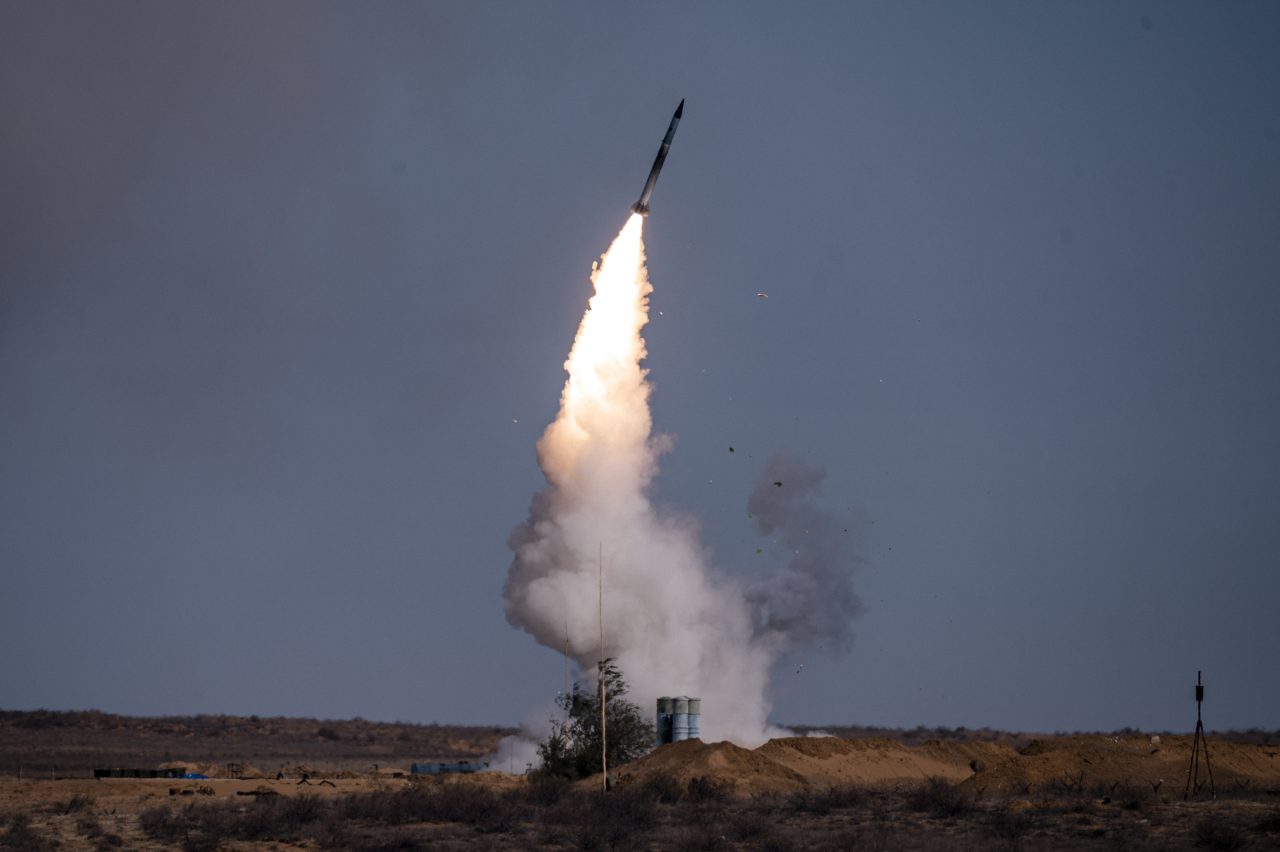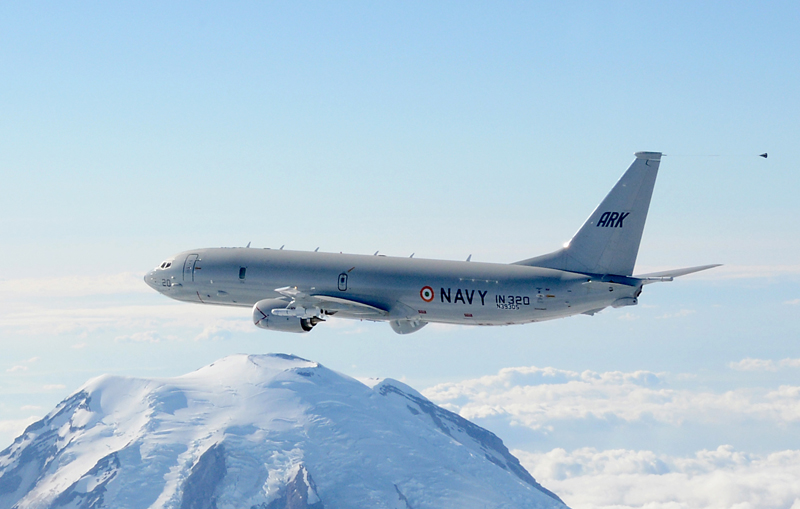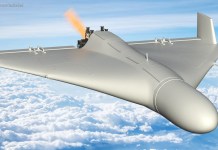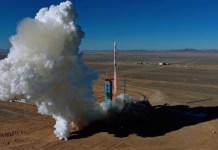Prime Minister Narendra Modi made a far-reaching announcement from the ramparts of the Red Fort during his Independence Day speech on 15 Aug 2025. He launched “Mission Sudarshan Chakra”, a shield that would protect strategic installations, civilian population centers, and also places of national and religious importance against enemy attacks.
This announcement has deep strategic connotations, especially as we navigate an uncertain geo-strategic and geo-political landscape in a dynamic global environment.
Comparisons are being drawn with the famous Iron Dome in Israel. Sudarshan Chakra, however, will be a much bigger and futuristic system that would address a wide range of threats.
The announcement is also a message to the world that India is unequivocally on the path of atmanirbharta (self-reliance). It also signifies confidence in the rising capabilities of our scientific community and defence industry after the success of Operation Sindoor.
The Prime Minister has christened it as “Mission Sudarshan Chakra”, emphasizing its importance and virtually equating it to the time-bound execution of “Mission Shakti”, the ASAT (anti-satellite) test India conducted in 2019.
He said that the mission will integrate advanced surveillance, interception, and counter-attack capabilities to enable swift neutralisation of threats across air, land, and sea domains.
He went on to say that “the entire modern system should be researched, developed, and manufactured in India, harnessing the talent of our youth. This powerful system will not only counter terrorist attacks but also strike back at the terrorists.”
This announcement couldn’t have come at a more opportune time, after Pakistan announced the creation of the Army Rocket Force Command.
China also fields a large inventory of conventionally armed Surface-to-Surface Missiles (SSMs), cruise missiles, and hypersonic weapons. Lessons learnt during Op Sindoor are also likely to have been a factor in this decision.
The timely announcement also signals the nation’s strategic autonomy and clear understanding of the changing character of war.
Nations With Missile Shield
The US is a leader in missile defence system technology. It has spent more than USD 400 billion on its missile defence system which comprises of Patriot system against aircraft and missiles at short range, Ground Based Mid-Course Defense against Intercontinental ballistic missiles (ICBMs) while they are still in space, AEGIS Ballistic Missile Defense (BMD) primarily deployed on naval ships against ballistic missiles from short range to ICBMs and Terminal High Altitude Area Defense (THAAD) which provides protection against short and intermediate range ballistic missiles.
The US is currently developing the Golden Dome system at a cost of about USD 175 billion, with the total cost going up to USD 831 billion over the next two decades. This system will be a combination of offensive and defensive systems.
It will be a system of systems combining a robust space-based layer, which will not only undertake surveillance, detection, and tracking of hypersonic and ballistic missiles, but also destroy missiles in space.
The system will be able to neutralize a threat before it can even be launched. This is a futuristic autonomous system that will integrate all five domains and work on an “AI-Enabled Fire Control Concept” to detect, identify, track, and neutralize a vast variety of threats originating from different parts of the world simultaneously. The system is likely to integrate present air defense equipment with the future systems across domains.
Russia’s Advanced Layered Defenses are highly sophisticated, designed to protect major strategic centers like Moscow. Moscow is defended by A-135/A-235 Ballistic Missile Defense (BMD) system.
S-400 and S-500 systems provide added protection and could be deployed at other vital areas/ vital points for their defence against ballistic missile attack. Russia has optimized its defence against missile and air attacks in consonance with the strategic importance of the defended sites rather than covering the entire nation with a large land mass, which would be extremely expensive to deploy and maintain. Russia has developed versatile counter-UAS systems during its war with Ukraine.

Unlike the US, Russia, Israel, and India, not much is known about the comprehensive multi-layered defence system of China. However, a clear picture of its capability emerges from the assessment of various systems developed so far.
China has a robust space-based sensor layer, and it has integrated all its AD systems to a large extent. Chinese systems like HQ-9, HQ-19, HQ-22, HQ-29, numerous short-range SAM systems, and counter-UAS systems, along with their ground-based ballistic missile defence system, can deal with all types of threats.
HQ-19 and HQ-29 are designed to protect ground and space-based assets. The only question is about the maturity of networking and automation. The progress achieved in AI, Cyber, autonomous systems, and space would indicate that China possesses a technologically advanced defence shield.
Iron Dome is a well-known defensive system that can be used against a wide range of UAVs, rockets, and missiles. The system has really developed, which was initially optimized for short-range rockets from Hamas or Hezbollah.
However, as the threat expanded to longer-range missiles from Syria, Lebanon, Yemen, and Iran, the shield was expanded to cater to missiles up to 2400 Km range. The shield was fairly effective during the 12-day war between Israel and Iran, intercepting almost 90% of incoming threats.
The system comprises Iron Dome, David’s Sling, Arrow 2, and Arrow 3 systems. These were augmented with Patriot and THAAD systems from the US.
Contours Of A Futuristic Sudarshan Chakra
The system should be able to defend Indian installations from threats spanning from tactical drones, Medium Altitude Long Endurance (MALE) UCAV, High Altitude Long Endurance (HALE) UCAV, Cruise missiles, Collaborative Combat Aircraft (CCA) / Loyal wingmen integrated with 4.5 and 5th generation fighters, supersonic cruise missiles fired from sub-surface/ surface or air, ballistic and quasi-ballistic missiles of intermediate range, Intercontinental Ballistic Missiles (ICBM), and hypersonic glide vehicles and hypersonic cruise missiles.
It should also be able to counterattack enemy targets that initiated the attack or could potentially become a threat. The system would comprise sensors to detect, identify, and track, followed by interception and destruction of the threat, and also counterattack enemy targets and potential threats proactively.
The first requirement of any defensive system is to detect the threat early to provide maximum warning. Thereafter, identify the threat, track it, and then destruction using the most effective component of the system.
Improvements in the accuracy and lethality of weapons necessitate a robust sensor layer. Both ground and air-based sensors have major limitations in picking up ballistic missiles, hypersonic weapons, and stealth aircraft/ UAVs.
This limitation can be overcome by placing sensors aboard satellites in space. A combination of electro-optical, infrared, synthetic aperture radar, and hyperspectral sensors is needed to cover the entire spectrum of threats and provide a round-the-clock and all-weather capability.
India has adequate ground-based radars of the three services and civilian agencies. These need to be networked for a seamless, redundant, and Recognized Air Situation Picture (RASP).
Airborne sensors in the form of AWACS/ AEW&C need to be augmented to provide round-the-clock coverage across our borders. Other sensors include those deployed on P-8I and UAVs, which are likely to be augmented with more such systems, including Sea / Sky Guardian UCAVs, in the future.

All ground and airborne sensors would have to be integrated. Consequently, all these sensors would be integrated with space-based sensors for a single RASP at the central level (National Command and Control Center) and limited geographic RASP at the operational level.
The command center would be the nodal agency dealing with all the threats at the national level, with decentralized execution at the operational and tactical levels. After one or more sensors pick up a threat, it will be identified and then tracked by the most appropriate system for destruction.
Since many threats are likely to appear simultaneously, including swarms of drones and salvoes of missiles, the information must be processed by an AI-enabled system. This is important after the experience of the Israel-Iran war, when more advanced Iranian missiles were able to get through defenses.
The tracking and destruction of incoming threats would be undertaken by systems most suited to tackle the threat. The systems would be arranged in a multi-layered format with CUAS and VSHORADS forming the innermost layer, followed by SHORADS (Spyder and OSA-AK, Pechora, Akash NG, QR SAM), Medium Range SAM, S-400/ Kusha Long-range SAM, and the outermost layer of BMD to take care of ballistic and quasi-ballistic missile threats.
The objective would be to choose the most appropriate weapon for the incoming threat.
The offensive component of the system would ensure a quick counterattack against present or potential threats. The targets would include terrorist camps, UAS launch and storage bases, missile sites and launchers, leadership command and control centers, etc. The task could be undertaken by loitering munitions, kamikaze drones, ground and air-launched cruise missiles, surface-to-surface missiles, and air strikes.
Sudarshan Chakra would be a scalable system that will protect consonance with the envisaged threat. This would imply that while the sensor layer would cover the entire nation, including island territories extending at least up to 2500 km beyond our border, the defensive layer would be structured in consonance with the envisaged threat.
Therefore, strategic targets of highest value, like the national capital, would be defended by every component from CUAS to BMD. In contrast, lower threat sites would be defended perhaps only by CUAS and SHORADS.
The system should be able to filter out threats that are not likely to cause unacceptable damage. This would ensure that precious resources are conserved and the cost of defending is manageable, an approach similar to the Iron Dome approach.
Typical Scenario
A typical operational scenario would involve a base or city being attacked by multiple weapons like drones, cruise missiles, and SSMs. The defensive system would detect these threats, process information like the type of weapon, point of launch, trajectory, estimated point of impact, and time available.
This data would be compared with the defensive measures available in the area and at the base. The system would then choose the most optimal interceptor and designate the drones to the CUAS system, cruise missiles to the SAM system, and SSMs to either long-range AD system / BMD for terminal / Endo-atmospheric or Exo-atmospheric engagement.
This will ensure that the same threat is not being tackled by multiple weapons. If the sensor grid establishes that some of the incoming weapons are likely to fall harmlessly, then they will not be engaged.
The system would also identify the place of launch and establish the presence of missile launchers and weapon storage nearby to undertake a counter strike using the most optimal weapon system.
Way Forward
While many components for the system are already in place, the most critical would be the sensor layer, integration, and development of an AI-enabled combat decision support system.
With ground and airborne sensors in place, the space-based network would be inescapable for persistent surveillance. This would involve much more than what is envisaged in Space-Based Surveillance (SBS) phase-III.
The space-based layer would involve satellites in Low Earth Orbit (LEO), Medium Earth Orbit (MEO), and Geo Stationary Orbit (GEO) for both surveillance and communication.
Intelligence Surveillance Target Acquisition and Reconnaissance (ISTAR) aircraft are also necessary in the sensor and control grid for rapid response to any threats by dynamic targeting.
The nation would need a large number of CUAS systems, especially with Directed Energy Weapon capability (Laser and high-powered microwave systems) to cover all sites.
AD weapon systems in large numbers will also be needed. Kusha, a long-range AD system with anti-ballistic missile capability, should also be operationalized in an early timeframe.
There is a need to develop longer-range DEW (laser) systems to intercept missiles. This will be more cost-effective in the long run.
Mission Sudarshan Chakra should be planned and executed through a building block approach in phases, with the first step being defining the operational requirements, identifying and categorizing strategically, operationally, tactically, and nationally important sites and bases.
Consequently, a blueprint for the mission should be drawn, followed by breaking the mission into projects. The currently available sensors, networks, and equipment must be integrated in the first phase to provide immediate defence.
This also calls for setting up an oversight committee and an execution committee drawn from all stakeholders. The oversight should be exercised by a professionally competent team for this complex task.
Automation would be the key to success and efficiency of the pan-India system to ensure the threats are seen and tackled at the farthest ranges. It will be a system of systems approach in providing a virtually impregnable defence shield.
AI will play a critical role in integrating sensors from different origins, agencies, and legacies, with AD systems of varying vintage to accelerate detection and interception of threats.
This entire enterprise will need a large number of personnel, which must be factored into the plan. AI is also important to tackle a large number of threats from diverse directions.
Humans will play a supervisory role rather than closely control the system since it is a pan-India system involving numerous sensors and weapons. The counterattack would have to be controlled by the human in the loop at the joint command and control center.
Sudarshan Chakra should effectively cover all the island territories, which would involve extended surveillance and deployment of defensive equipment across multiple islands. The sensors must be designed for unmanned extended operations through remote access and monitoring.
A pan-India system with thousands of constituents and an expansive space layer would be an expensive proposition. This would necessitate earmarking a substantial budget.
This budgetary allocation must be finalized as soon as possible to meet designated timelines. The mission would involve R&D agencies, academia, and private industry since the PM has categorically directed that the Sudarshan Chakra be a completely indigenous system.
Conclusion
Mission Sudarshan Chakra is a strategic decision to provide India a defensive shield against diverse threats with an ambitious offensive capability to counterattack proactively.
The Prime Minister has reposed his faith in the R&D organisations and the Indian defence industry, both public and private.
This is a tall task considering the scale, since it involves a multitude of equipment in all domains. It will be a highly automated system with futuristic technologies building upon present sensors and systems. It calls for a unified effort from all stakeholders after formulating a detailed blueprint on threats and areas to be defended.
Mission Sudarshan Chakra aligns with the contours of future non-contact warfare and threats India is likely to face from diverse UAVs, cruise missiles, SSMs, and hypersonic weapons.
Space, cyber, and AD systems will therefore be the bedrock of this system with AI-enabled command, control, and decision support to ensure efficiency, accuracy, and lethality, coupled with quick counterattack capability.
Mission Sudarshan Chakra will convey the strategic deterrence and strong resolve of the nation. The government must now commit funding for this project to meet the ambitious timelines of 2035.
- Air Marshal (R) RGK Kapoor, PVSM, AVSM, VM, is a retired officer of the Indian Air Force. He served as the Air Officer Commanding-in-Chief (AOC-in-C) of Central Air Command.
- Mail EurAsian Times at editor (at) eurasiantimes.com




